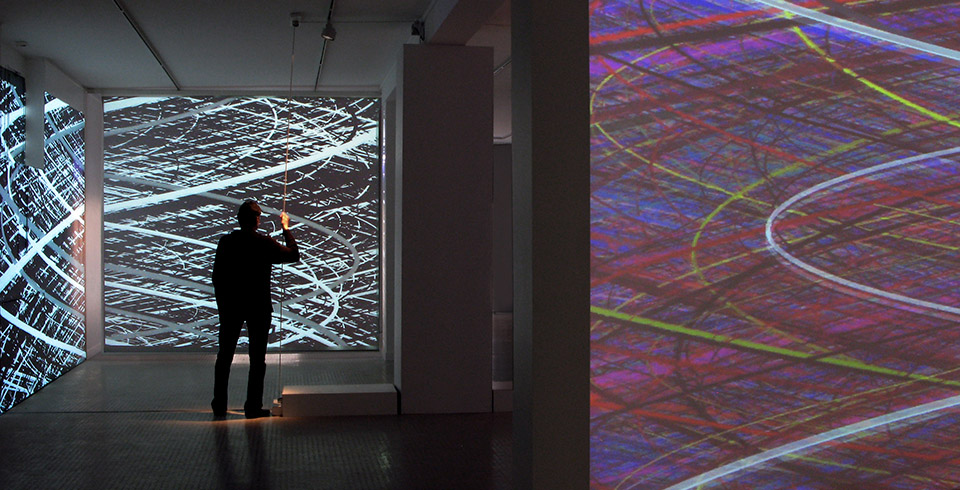// Yoo Jin Shin
// Section B
// yoojins@andrew.cmu.edu
// Project-02-Variable-Face
var eyeSize = 50;
// top pupil
var pupilSizeL = 5;
var pupilSizeR = 6;
var pupilLeftX = 150;
var pupilLeftY = 154;
var pupilRightX = 220;
var pupilRightY = 154;
// bottom pupil
var pupilSize2L = 10;
var pupilSize2R = 12;
var pupilLeftX2 = 130;
var pupilLeftY2 = 164;
var pupilRightX2 = 210;
var pupilRightY2 = 166;
var faceWidth = 270;
var faceHeight = 200;
var mouthStart = 30;
var mouthStop = 122;
var backgroundR = 3;
var backgroundG = 117;
var backgroundB = 0;
var faceR = 244;
var faceG = 240;
var faceB = 132;
function setup() {
createCanvas(640, 480);
}
function draw() {
background(backgroundR, backgroundG, backgroundB);
noStroke();
// face
fill(faceR, faceG, faceB);
ellipse(180, 180, faceWidth, faceHeight);
// left eye
fill(0);
ellipse(140, 160, eyeSize, eyeSize);
// left pupils
fill(255);
ellipse(pupilLeftX, pupilLeftY, pupilSizeL, pupilSizeL);
ellipse(pupilLeftX2, pupilLeftY2, pupilSize2L, pupilSize2L);
// left eyebrows
fill(backgroundR, backgroundG, backgroundB);
rect(125, 123, 25, 7, 3);
// right eyes
fill(0);
ellipse(220, 160, eyeSize, eyeSize);
// right pupils
fill(255);
ellipse(pupilRightX, pupilRightY, pupilSizeR, pupilSizeR);
ellipse(pupilRightX2, pupilRightY2, pupilSize2R, pupilSize2R);
// right eyebrows
fill(backgroundR, backgroundG, backgroundB);
rect(210, 123, 25, 7, 3);
// mouth
fill(backgroundR, backgroundG, backgroundB);
arc(180, 180, 20, 40, mouthStart, mouthStop);
}
function mousePressed() {
eyeSize = random(37, 55);
pupilSizeL = random(3, 9);
pupilSizeR = random(3, 9);
pupilSize2L = random(7, 12);
pupilSize2R = random(7,12);
pupilLeftX = random(142, 153);
pupilLeftY = random(150, 155);
pupilLeftX2 = random(142, 153);
pupilLeftY2 = random(162, 169);
pupilRightX = random(207, 218);
pupilRightY = random(150, 155);
pupilRightX2 = random(207, 218);
pupilRightY2 = random(162, 169);
faceWidth = random(150, 300);
faceHeight = random(150, 300);
faceR = random(0, 255);
faceG = random(0, 255);
faceB = random(0, 255);
mouthStart = random(1, 360);
mouthStop = random(1, 360);
backgroundR = random(0, 255);
backgroundG = random(0, 255);
backgroundB = random(0, 255);
}I tried creating a googly-eye-effect using the different variables by focusing the mouse-click changes mainly on the eyes.
![[OLD FALL 2018] 15-104 • Introduction to Computing for Creative Practice](../../../../wp-content/uploads/2020/08/stop-banner.png)

